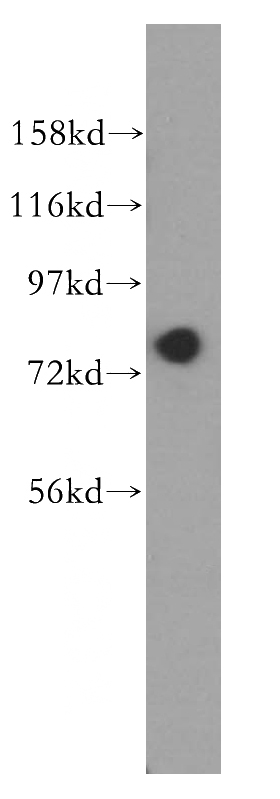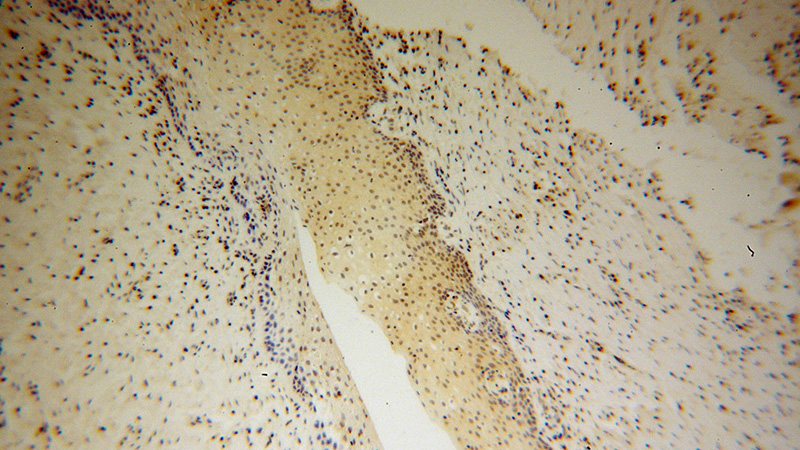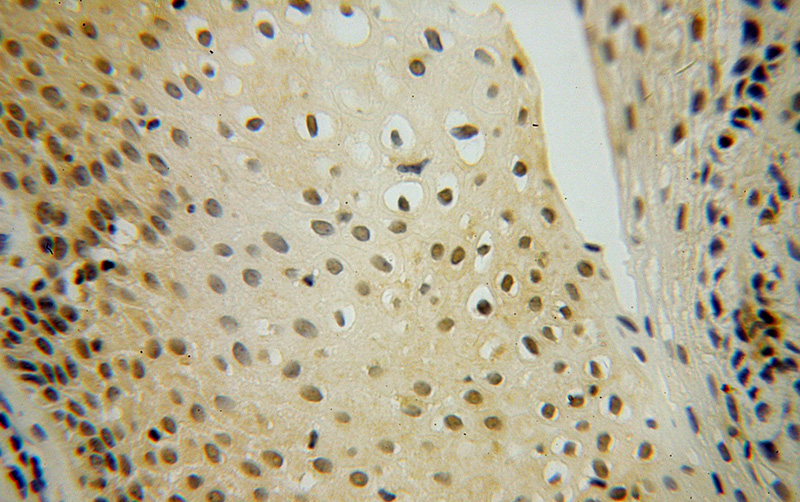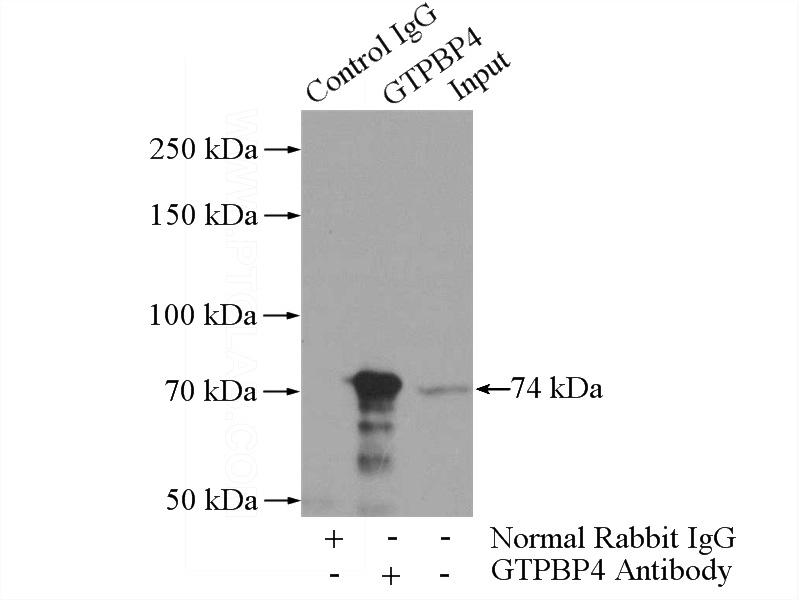-
Product Name
GTPBP4 antibody
- Documents
-
Description
GTPBP4 Rabbit Polyclonal antibody. Positive WB detected in mouse testis tissue, HeLa cells, human kidney tissue. Positive IP detected in mouse testis tissue. Positive IHC detected in human cervical cancer tissue. Observed molecular weight by Western-blot: 74 kDa
-
Tested applications
ELISA, WB, IHC, IP
-
Species reactivity
Human, Mouse; other species not tested.
-
Alternative names
CRFG antibody; FLJ10686 antibody; FLJ10690 antibody; FLJ39774 antibody; GTP binding protein 4 antibody; GTP binding protein NGB antibody; GTPBP4 antibody; NGB antibody; NOG1 antibody
-
Isotype
Rabbit IgG
-
Preparation
This antibody was obtained by immunization of GTPBP4 recombinant protein (Accession Number: NM_012341). Purification method: Antigen affinity purified.
-
Clonality
Polyclonal
-
Formulation
PBS with 0.02% sodium azide and 50% glycerol pH 7.3.
-
Storage instructions
Store at -20℃. DO NOT ALIQUOT
-
Applications
Recommended Dilution:
WB: 1:1000-1:10000
IP: 1:200-1:2000
IHC: 1:20-1:200
-
Validations

mouse testis tissue were subjected to SDS PAGE followed by western blot with Catalog No:111244(GTPBP4 antibody) at dilution of 1:800

Immunohistochemical of paraffin-embedded human cervical cancer using Catalog No:111244(GTPBP4 antibody) at dilution of 1:100 (under 10x lens)

Immunohistochemical of paraffin-embedded human cervical cancer using Catalog No:111244(GTPBP4 antibody) at dilution of 1:100 (under 40x lens)

IP Result of anti-GTPBP4 (IP:Catalog No:111244, 4ug; Detection:Catalog No:111244 1:800) with mouse testis tissue lysate 4000ug.
-
Background
GTP-binding proteins are GTPases and function as molecular switches that can flip between two states: active, when GTP is bound, and inactive, when GDP is bound. 'Active' in this context usually means that the molecule acts as a signal to trigger other events in the cell. When an extracellular ligand binds to a G-protein-linked receptor, the receptor changes its conformation and switches on the trimeric G proteins that associate with it by causing them to eject their GDP and replace it with GTP. The switch is turned off when the G protein hydrolyzes its own bound GTP, converting it back to GDP. But before that occurs, the active protein has an opportunity to diffuse away from the receptor and deliver its message for a prolonged period to its downstream target.
-
References
- Lunardi A, Di Minin G, Provero P. A genome-scale protein interaction profile of Drosophila p53 uncovers additional nodes of the human p53 network. Proceedings of the National Academy of Sciences of the United States of America. 107(14):6322-7. 2010.
- Finch AJ, Hilcenko C, Basse N. Uncoupling of GTP hydrolysis from eIF6 release on the ribosome causes Shwachman-Diamond syndrome. Genes & development. 25(9):917-29. 2011.
Related Products / Services
Please note: All products are "FOR RESEARCH USE ONLY AND ARE NOT INTENDED FOR DIAGNOSTIC OR THERAPEUTIC USE"
